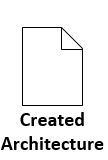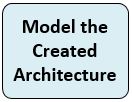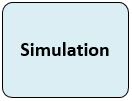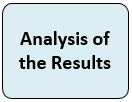Architecture Assessment – Using Simulation
| Enterprise architecture frameworks can be extended with simulation modeling to provide enterprise wide dynamic analysis to better understand how changes to an enterprises’ architecture influence the range of behaviors it is capable of producing.
Enterprise architecture frameworks can be extended with simulation modeling to provide enterprise wide dynamic analysis to better understand how changes to an enterprises’ architecture influence the range of behaviors it is capable of producing. Changes to one aspect of an enterprise’s processes, incentives, or strategy can affect its behavior in seemingly unrelated areas at distant points in time. SimEvents software provides a simulation framework for analysing event-driven models to optimise performance characteristics such as latency, workload, conversion, and entity loss. Generators, switches,queues, servers and other predefined blocks enable us to model various important aspects of the system architecture such as processing delays, routing, prioritisation for communication and scheduling tasks. |
The process to do the evaluation is in the below:
 |
 |
 |
 |
 |
 |
 |
 |
 |
Activities
- Model the created architecture
- Simulation
- Analysis of the results
References
- Refs.